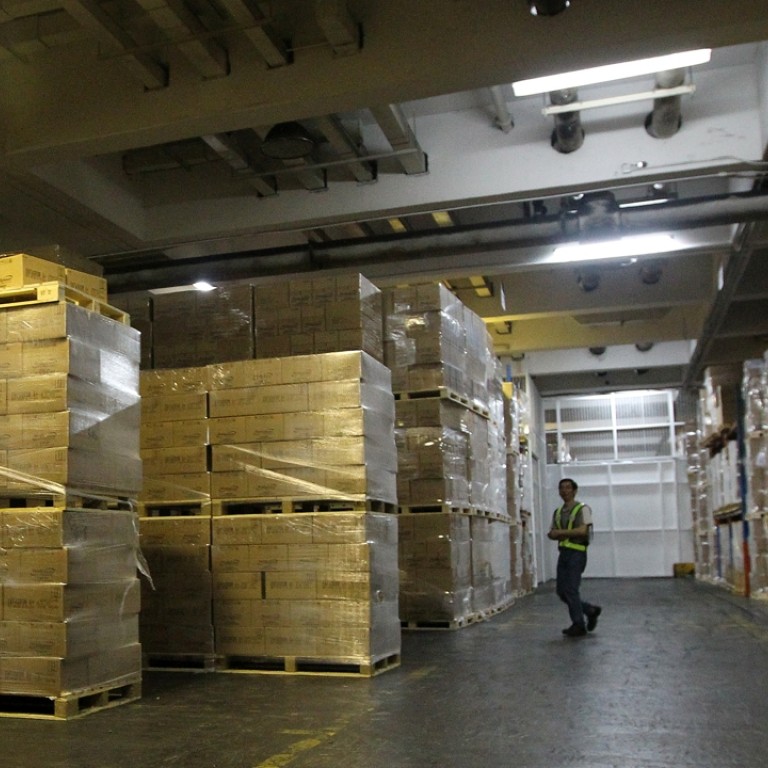
Shortage of warehouse space in Hong Kong likely to continue
Warehouse vacancy rates declined to 1.7 per cent in the third quarter of this year
Despite its position as a regional logistics hub, Hong Kong’s lack of industrial land and a resulting warehouse shortage have long been headaches, with the warehouse vacancy rate remaining below 2 per cent and unlikely to improve much next year.
A slowdown in retail sales led to a slight easing in demand for warehouse space this year, but new supply is extremely limited.
Warehouse vacancy ratesdeclined to 1.7 per cent in the third quarter of this year, from 1.9 per cent in the second, according to property consultancy Savills, picking up from near zero last year.
No industrial site is listed for auction or tender on Hong Kong government’s 2015-16 land sale programme and only one of the 36 plots sold in 2014-2015 was industrial land.
“There will be no large supply of industrial land in the next two to three years; the shortage will continue,” said Thomas Lam, head of valuation and consultancy at Knight Frank.
Lam said a softening in retail sales due to a decline in demand from mainland visitors had only had a limited impact on the demand for storage space.
There will be no large supply of industrial land in the next two to three years; the shortage will continue
“Luxury brands are closing stores but others such as fast fashion brands are opening new shops, and the latter is a heavier user of stock space,” he said.
Modern warehouses in prime locations are eagerly sought after and close to full occupancy.
Goodman, a leading modern warehouse operator and Hong Kong’s largest industrial landlord, owning 14 properties, recorded a 99.6 per cent occupancy by the end of September.
Although trading and logistics is one of Hong Kong’s four pillar industries and accounts for roughly 26 per cent of gross domestic product, the government has been less motivated to turn over land for logistics use because its main focus is to increase the supply of land for housing.
Meanwhile, vast amounts of industrial stock have been replaced by residential and commercial developments under the government’s industrial revitalisation scheme since 2010, further depleting the options available to industrial occupiers.
The authorities have noticed the problem in recent years and have earmarked 10 hectares of land in Tuen Mun for industrial use, but researchers said it was unlikely to come onto the market by the end of 2020.
Hong Kong Logistics Association president Stephan Chan said he expected the vacancy rate would remain flat in 2016, but rents could be cheaper.
Chan said two new warehouse projects in Tsing Yi were scheduled to be launched in the first quarter of next year, but demand would be solid because more cross-border e-commerce operators were looking for industrial space in Hong Kong to build up distribution centres.
“The rent is already too expensive so there is room to decline a bit,” Chan said, adding that some older warehouses in the New Territories had cut monthly rents from HK$13.50 to HK$10 per square foot.
Hong Kong’s warehouse rents have surged 59 per cent since 2010, according to data from global real estate adviser CBRE.

